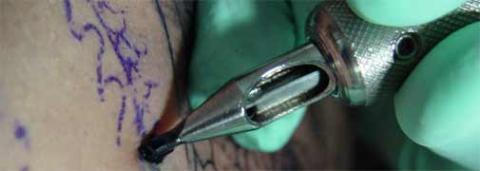
The Koebner phenomenon refers to the development of new lesions following skin trauma. This occurs in patients with certain skin disease in areas of traumatized but otherwise normal skin. The new lesions are clinically identical to those in diseased skin.
Koebner is not common only to vitiligo. It has been observed in other common skin conditions such as psoriazis, eczema and other rarer diseases. In fact, Heinrich Koebner, the dermatologist who first described it, made his initial observations on patients with psoriasis appearing at the site of horse bites or tattoos.
- mechanical or thermal trauma (due to animal bites, burns, electrodesiccation, excoriation, freezing, friction, gunshot wounds, insect bites, lacerations, nail manicuring, poor fitting shoes, pressure, shaving, surgical grafts, surgical incision, tape stripping, thumb sucking)
- dermatoses (such as carbuncles/furuncles, dermatitis, dermatitis herpetiformis, dermatophytosis, diaper dermatitis secondary to Candida infection, eczema, epidermal inclusion cyst, folliculitis, herpes simplex, herpes zoster, lichen planus, lymphangitis, measles, miliaria, perianal Corynebacterium minutissimum infection, perianal neurodermatitis, pityriasis rosea, psoriasis, scabies, seborrheic dermatitis, varicella, vitiligo)
- allergic or irritant reactions (following BCG vaccination, hair spray, hair tints, influenza vaccination, photosensitivity, positive patch testing, scratch skin test, tattoos, tuberculin skin test, urticaria)
- therapy (such as Grenz ray therapy, roentgen therapy, iodine application, ultraviolet light)
Studies have shown that if a patient reacts to one of the known stimuli, then he would react to all.
The exact mechanism of the Koebner phenomenon is not known. Factors involved are thought to be: immunologic, vascular, dermal, enzymatic, inhibitory, neural, growth, genetic and hormonal.
The "reverse" Koebner response is seen when an area of vitiligo or psoriasis clears following injury (abrasion, cuts). A study published in the Journal of Dermatology evaluated that Koebner phenomenon has been recorded in 5% of vitiligo cases.
A recent medical article reports the case of a woman that developed vitiligo in her eyebrow following a procedure of eyebrow plucking at a local beauty parlor. This stands as an example of unusual stimuli for the Koebner phenomenon. Other reports of vitiligo koebnerization include procedures such as lip waxing, eyebrow waxing or tattooing.
SOURCES:
1) J Cosmet Dermatol. 2002 Dec;1(4):214-5. Vitiligo KOEBNERized by eyebrow plucking by threading.Verma SB. Consultant Dermatologist, Baroda, India.
2) Devinder Thappa. (2004). The isomorphic phenomenon of Koebner. Indian Journal of Dermatology, Venereology and Leprology, 70(3), 187-9. Retrieved March 18, 2011, from Academic Research Library. (Document ID: 1210947271).